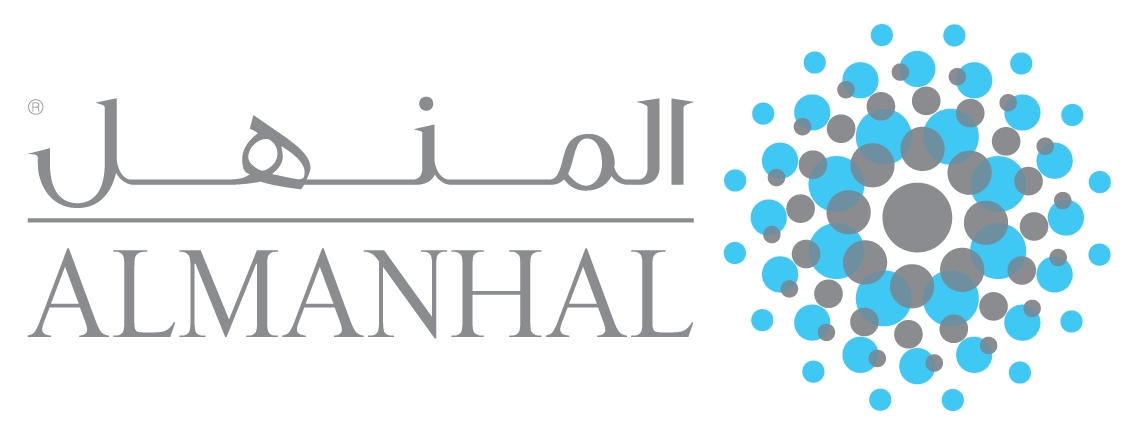Assessing the Awareness of Islamic Law on Equity Investment in State of Assam, India
DOI:
https://doi.org/10.31436/jif.v9i1.323Abstract
The objective of the study is to ascertain the awareness level of the Shariah and equity investment decisions among the Muslims population in the selected districts of Assam, India. The study is based on primary data collected from the government and semi-government sector which are classified as educated Muslim employees working in Assam, India. This study found that the awareness levels on the Shariah and equity investment of the educated Muslim employees are low. However, the pretention of awareness on the Shariah requirements with regards to equity investment is moderate. The study is conducted based on the response from Muslim employees in the four districts of Assam, India. Since the level of awareness on equity investment as well as the Shariah is at low level, there is a need for adequate awareness campaign highlighting the salient features of Islamic law regarding the equity investment in particular and about the equity investment in general.
Downloads
References
Abass, M. (2017). Factors Influencing Consumer Choice of Islamic Insurance (Takaful) In Kenya. Retrieved from Digital Repository: http://usiuservicedesk.usiu.ac.ke/handle/11732/3356
Abduh, M., Omarov, & Daniyar. (2013). Muslim's Awareness and Willingness to Patronize Islamic Banking in Kazakhstan. Journal of Islamic Banking & Finance, 30(3), 16-24.
Amin, U. (2012). Islamic Banking in India: Religious and Socio-Economic Perspectives affecting Muslim Investors in Ahmedabad District in Gujarat. International Journal of Research in Commerce, IT and Management, 2 (1), 116-121.
Aziz, M. R., Hashim, A. A., & Salleh, N. S. (2017). A Review of Literatures on Islamic Finance Between 2006 –2016. Journal of Islamic Legal Studies, 3(1), 33-50.
Bhattacharjee, J., & Singh, R. (2017). Awareness about Equity Investment among Retail Investors: A Kaleidoscopic View. Qualitative Research in Financial Market, 9(4), 310-324.
Bhattacharjee & Singh. (2017). Retail Investors’ Awareness towards Screen-Based Share Trading: A Study in Silchar Town of Assam presented at National Seminar on Skill Development and youth-Prospects and challenges in North East India organized by Assam University, Silchar on 10th February 2017.
Bordoloi, D. (2015). Perceptions and Awareness about Shariah Laws in Making Equity Investment Decisions among Indian Muslims: A Literature Review. PCC Journal of Economics and Commerce, 7(1), 40-44.
Census. (2011). Census of India. New Delhi: Govt of India.
Choudhury and Singh (2015). Perception of Customers towards Responsiveness of Bancassurance Channel: An Empirical Study in Assam. International Journal of Entrepreneurship & Development Studies, 3(1), 19-35.
Dali, N. R. (n.d.). Islamic Credit Card Industry in Malaysia: Customers’ Perceptions and Awareness. Retrieved January 14, 2014, from www.academia.edu: www.academia.edu/2070610/Islamic_Credit_Card_Industry_in_Malaysia_Customers_Perceptions_and_Awareness
DeLorenzo, Y. (2001). Shariah Supervision of Islamic Mutual Funds. Proceedings of Fifth Harvard University Forum on Islamic Finance. Harvard University.
Employees, C. o. (2001). Census of Central Govt employees.
Faisal, M., Akhtar, A., & Rehman, A. (2012). Awareness of Islamic Banking In India- An Empirical Study, retrieved from https://www.academia.edu/5218913/AWARENESS_OF_ISLAMIC_BANKING_IN_INDIA-An_Empirical_Study
Haque, A., Osman, J., & Ismail, A. Z. (2009). Factor Influences Selection of Islamic Banking: A Study on Malaysian Customer Preferences. American Journal of Applied Sciences, 6(5), 922-928.
Hebbar, C. K., Shenoy, S. S., Rao, G. P., & Nayak, S. (2014). Feasibility Study of Islamic Insurance (Takaful) in India; Challenges and Prospects. Asian Journal of Research in Business Economics and Management, 4 (9), 7-15.
Hossain, M. Z. (2009). Why is Interest Prohibited in Islam: A Statistical Justification. Humanomics, 25(4), 241-253.
India, C. o. (2011). New Delhi: Govt of India.
Islam, J. U., & Rahman, Z. (2017). Awareness and Willingness towards Islamic Banking among Muslims: An Indian Perspective. International Journal of Islamic and Middle Eastern Finance and Management, 10 (1), 92-101.
Jamaluddin, N. (2013). Marketing of Shariah-based Financial Products and Investments in India. Management Research Review, 36 (4), 417-430.
Jameel, S. A. (2017). Customer’s Awareness towards the Islamic Banking System Case Study on Selected Banking in Duhok City- Kurdistan Region. Humanities Journal of University of Zakho, Vol 5 No 1.
Joyce, K.H.N, Yong, L.H.L., & Sellappan, R.D. (2010). A Study of Financial Awareness among Youths. Young Consumers, 11(4), 277-290.
Kaawaase, T. K., & LailahNalukwago. (2017). Religiosity and Islamic Banking in Uganda. Makerere Business Journal, 13 (1), 70-93.
Khan, H. N. (2012). Customer Awareness and Adoption of Islamic Banking in Pakistan. Interdisciplinary Journal of Contemporary Research in Business, 3(9), 359-366.
Ling, K. L., Ling, K. M., Pey, L. S., & Hui, W. Z. (2012). Awareness of Islamic Banking Products and Services among Non-Muslims in Malaysia. Malaysia: Universiti Tunku Abdul Rahman.
Mahajar, A. J., & Yunus, J. B. (2011). The Effectiveness of the Promotional Tools in Creating Awareness toward Customers of Islamic Banking in Malaysia. Problems and Perspectives in Management, 9(1), 32-38.
Masvood, Y., & Choudary, Y. L. (2015). Islamic Banking-A Cross-Cultural Patronage Study among the Students in Chennai. Asian Social Science, 11(4), 310-318.
Murad, M., Gill, S. A., & Ali, A. F. (2016). From Adoption of Products and Services Regarding Islamic Banking to Customer Awareness in Pakistan. International Journal of Management and Organizational Studies, 5 (4), 126-138.
Naser, K., & Salem, A. (2013). Customers' Awareness and Satisfaction of Islamic Banking Products and Services: Evidence from the Kuwait Finance House. EBSCOhost, 5(6), 185-199.
Newaz, F. T., Fam, K. S., & Sharma, R. R. (2016). Muslim Religiosity and Purchase Intention of Different Categories of Islamic Financial Products. Journal of Financial Services Marketing, 21(2), 141–152.
Punjabi, N. M. (2012). Islamic Finance - An Indian Perspective. Mumbai, Maharashtra, India.
Rao, K. C. (2011). Challenges and Opportunities of Islamic Banking in India. Asian Journal of Research in Social Science and Humanities, 1(3), 34-40.
Raza, H. (2014). Customer Satisfaction and Awareness about Islamic Banking System. Research Journal of Finance and Accounting, 5(3), 89-97.
Sabi, M. (2016). Awareness and Perceptions of Islamic Microfinance among Microfinance Clients in Kyrgyzstan and Tajikistan. Central Asian Survey, 35(1), 26-37.
Saini, Y., Bick, G., & Abdulla, L. (2011). Consumer Awareness and Usage of Islamic Banking Products in South Africa. South African Journal of Economic and Management Sciences, 14(3), 298-313.
Siddique, A. R. (2012). Customers' Satisfaction towards Islamic Banking: Pakistan's Perspective. Arabian Journal of Business and Management Review (OMAN Chapter), 1(6), 71-79.
Singh, R. (2011). Equity investment Culture and Entrepreneurship Culture-Initiation and Adaptation. Pacific Business Review International, 4(1), 66-71.
Singh, R. (2012). Risk Perception in Initial Public Offer of Shares: A Psychometric Study. Asia Pacific Journal of Risk and Insurance, 6 (2), 1-13.
Singh, R. & Bhowal, A. (2011). Development of Marketing Driven Measure of Risk Perception. The Journal of Risk Finance, 12 (2), 140 – 152.
Singh, R., & Bhowal, A. (2010a). Imparting Investment Education to Employees by the Employer: An Expectation-experience Gap Study. Amity Management Analyst, 5(2), 57-65.
Singh, R., & Bhowal, A. (2010b). Risk Perception of Employees with Respect to Equity Shares. Journal of Behavioral Finance, 11(3), 177-183.
Singh, R., & Das, S. (2013). Is Islamic Equity Index an Investment Heaven? A Comparative Study between SHA 50 and Nifty 50 of India. Journal of Islamic Economics, Banking and Finance, 113(913), 1-12.
Singh, R., & Kar, H. (2011). Do the Highly Educated Subscribers Aware of it? New Pension Scheme in India. SIBACA Management Review, 1(1), 8-16.
Singh, R., & & Bordoloi, D. (2015). Perception and Awareness about Islamic Equity Investment: A Literature Review, National Seminar on Contemporary issues in business education and research, organized by Department of Commerce, Assam University on 6th October, 2015.
Statistics, D. O. (2004). Census of Government Employees . Guwahati: Govt of Assam.
Yahaya, S., Ibrahim, H., Zulkafli, A. H., Shahril, M., & Razimi, A. (2017). Demographics Factors and Awareness on Shariah-based Private Retirement Scheme among Higher Learning Institution Students in Malaysia . Scientific Journal Economics, Management and Sustainability, 2(2), 86-94.
Yatoo, A.N., Muthu, & Sudalai, S. (2013). Islamic Finance in India: An Idea of Assessment and Awareness. International Journal of Excellence in Islamic Banking and Finance, 3(2), 1 – 10.












